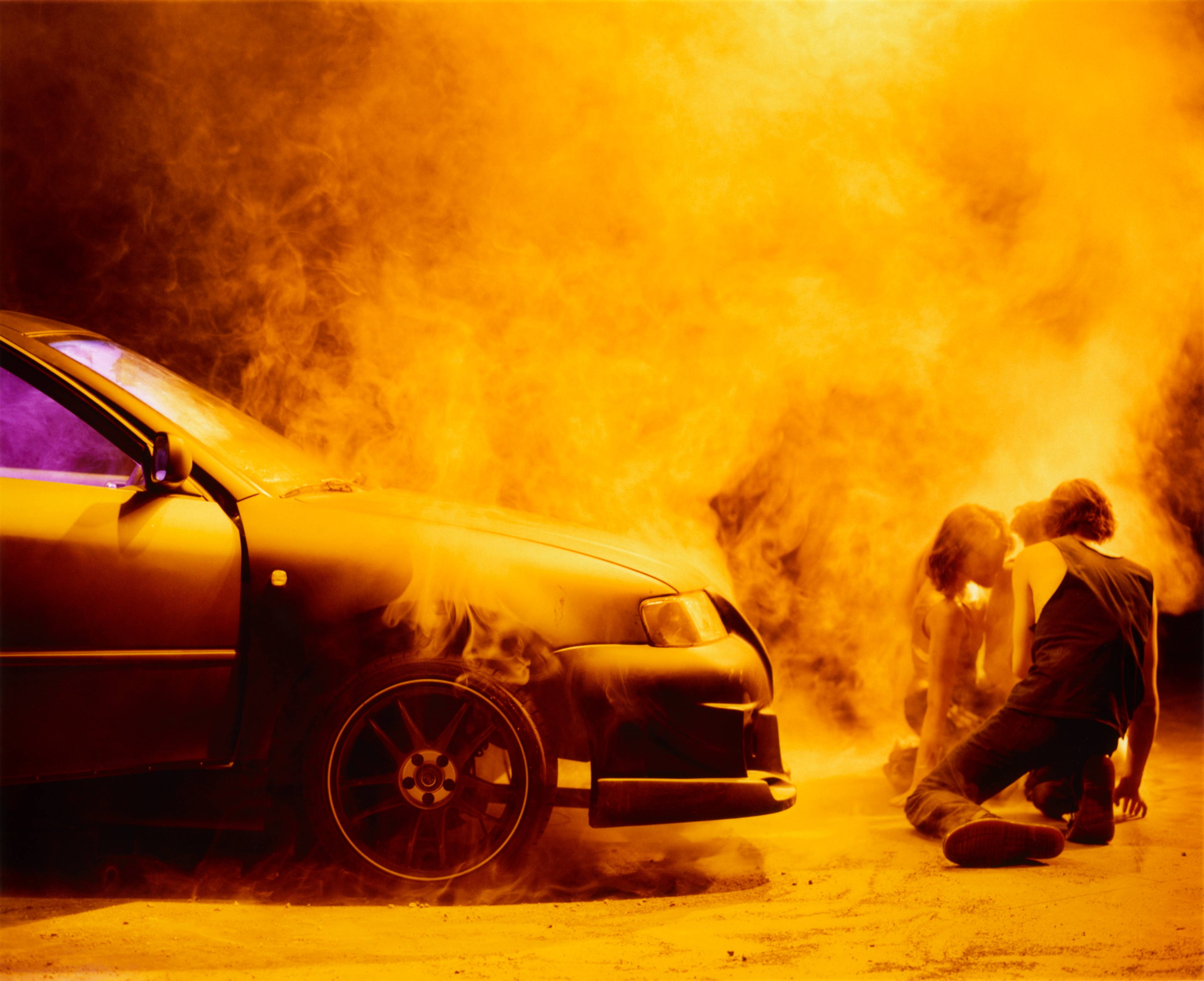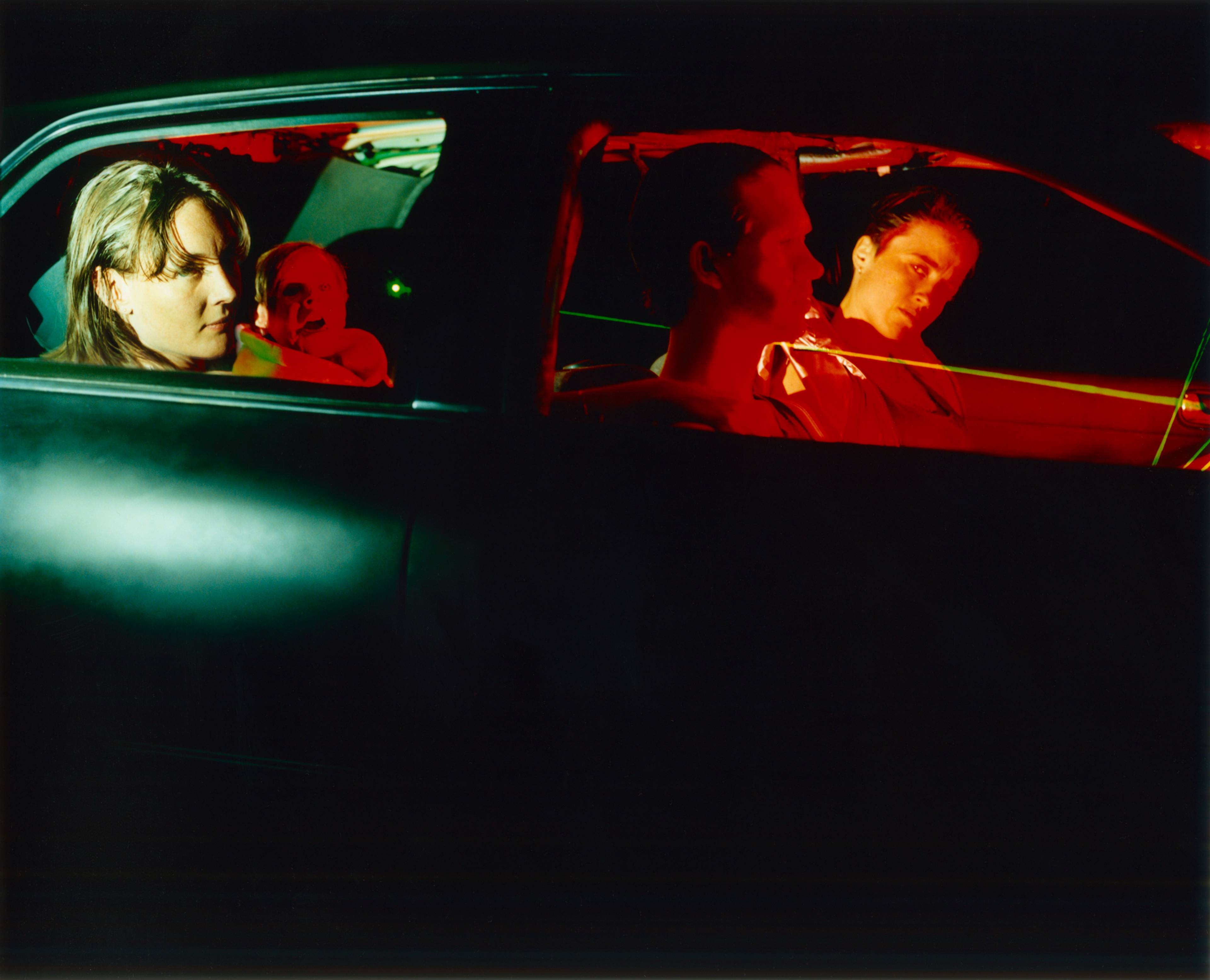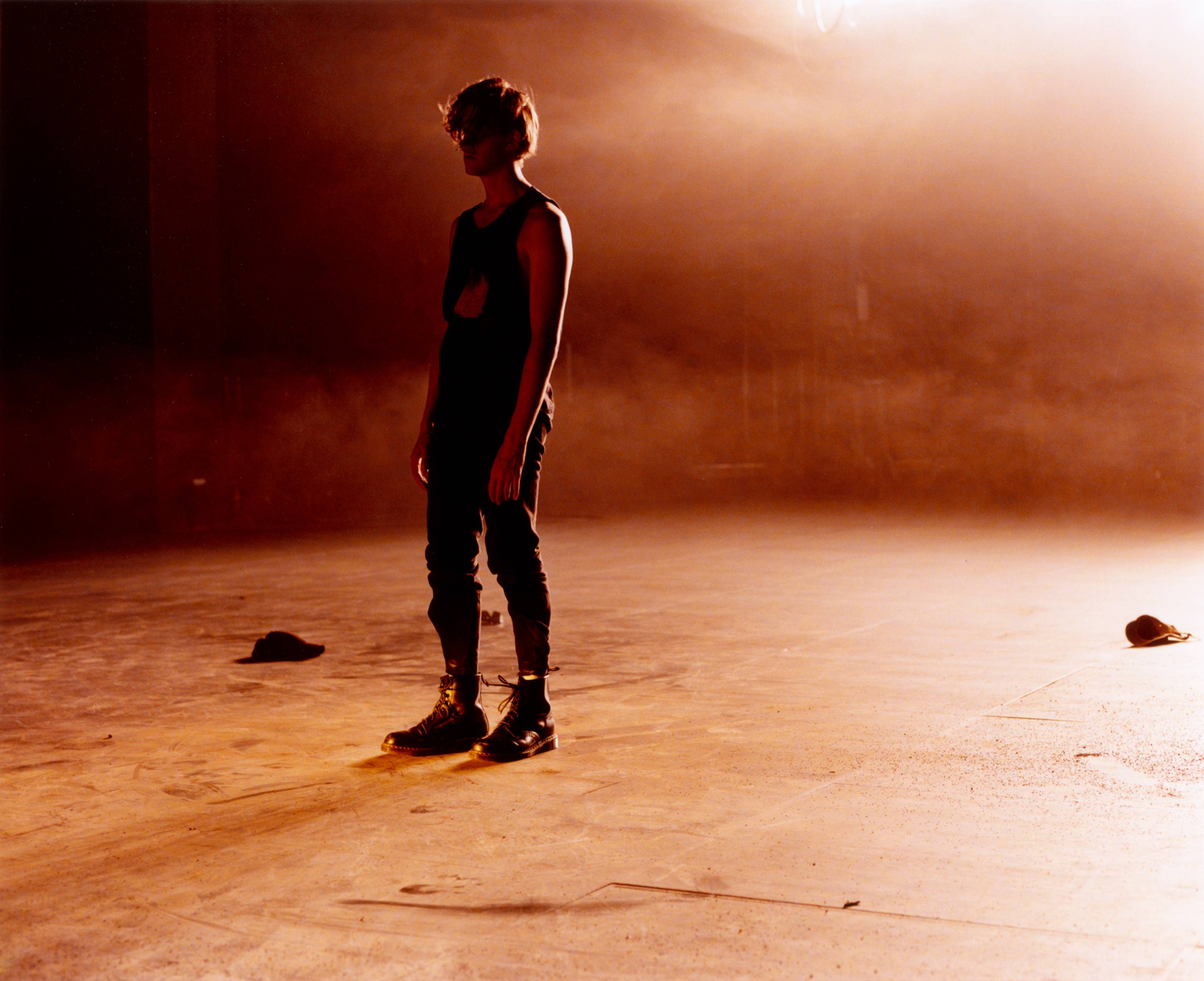Gravel is scattered across the black dance floor. Moonlight falls on the roof of a matte-black Volkswagen Golf, something about aliens crackling from the radio. In the beginning, the siblings Clara and Felix, played by actress Adèle Haenel and performer Theo Livesey, sit in the front seats as if in a dimly lit glass box. Clara is shoving crisps into her mouth and raving about the party they’ve just come from. She makes fun of the broadcast’s abductions – that it wasn’t an extraterrestrial, but someone in the family. When she gets out of the car to the opening notes of the Mexican folk song “La Bamba,” though, she freezes.
Clara breaks down once, then again and again. Her sobbing, curled up on the fog-strewn floor, sometimes feels endless. Twenty years, we learn in snippets, have passed since both siblings were raped by their grandfather. Seemingly detached from herself, Clara repeatedly asks, sobbing, whether or not she is still crying. “It is as if my body weeps on its own behalf,” writes Anne Boyer in A Handbook of Disappointed Fate (2018). “It is as if in all its crying my body knows something about sorrow that I refuse.” While mind-body dualism, per Boyer, is suspended by tears, the French-Austrian choreographer Gisèle Vienne’s (*1976) EXTRA LIFE (2023) addresses that embodied knowledge by showing the shattered state of the survivors, whose time stands still as they try, decades later, to cope with the experienced abuse.
In slow motion, the characters explore a lunar landscape, trying to orient themselves and understand their surroundings. Sudden leaps in time and space are made clear by verbalized flashbacks and compositional lighting. Meanwhile, performer Katia Petrowick slowly dances her way into Clara and Felix’s relationship, alternately playing one of the siblings’ roles in parallel, visualizing their emotions by working herself to exhaustion, and penetrating the car with slow, pelvic movements.
Naturally, the play takes a turn for the worse. Partly reenacted in disguised voices and with a cadaverous child puppet, the grandfather takes turns molesting one of the children as the other watches their favorite TV show (featuring the track that triggers Clara). Grandma could always make excuses about being deaf, and everyone did mourn her husband at his funeral, Clara ironically exclaims. Tragically, it cannot always be ruled out that one’s relatives were genuinely unaware of what was happening; but it is much more likely that patriarchal power, dependencies on the perpetrator, or self-protection prevented them from recognizing the abuse.
In her book Strange Encounters (2000), Sara Ahmed argues that our “we” is necessarily defined by an “other” and that, in turn, the representation of the unknown can only take place through concepts of the known. “The possibility that aliens could be nearby requires that we invent new ways of telling the difference … The alien stranger is hence, not beyond human, but a mechanism for allowing us to face that which we have already designated as the beyond.” By trying to debunk alien narratives for what they really might be, the play initiates a confrontation with violence as an inherent beyond.
The performers precise movements are alternatively framed and constrained by Yves Godin’s lighting. Sometimes as a glowing, bleeding cut in space, sometimes as a sinking sky, the claustrophobic surfaces quickly become labyrinthine or a spacey, net-like version of the lace in Maya Deren’s surrealist film The Witch’s Cradle (1944). Amid the atmospheric laser show, Caterina Barbieri’s electro-mystical soundscapes add a dreaminess to the scenery, making it softer, more bearable. The thick layer of fog on the floor whirls up as the actors move and swallows them, shouting “Arrête! C’est pas drôle” (Stop! It’s not funny); “S’il te plaît!” (Please!); or “J’aime pas ça!” (I don’t like that!) between pleas and bouts of laughter. Moments of intimate contact between the siblings – hugging, holding, caressing each other’s faces – have a slightly incestuous charge, while their gestures of reassurance or protection sometimes end up shoving away a companion who is not a perpetrator, but a reminder of abuse. These shifted boundaries are likewise evident in the effects of the constant toggling between play, violence, and exhaustion, when heads sink, shoulders slouch, and actors bend to their knees before collapsing.
In EXTRA LIFE, Clara keeps saying it’s 5:38am, confirming that there is no break in the feedback loop of trauma and coping that defines the familial story of abuse, which is not just the siblings’, but the system’s, hidden behind mysterious, alien, pseudo-scientific narratives. In the spirit of the affective turn, the play understands the damage caused by patriarchal structures by appealing to the socio-political significance of personal feelings. The hoped-for salvation lies in talking about what really happened – at least it’s a start. Still, its romanticization of bonding with other trauma survivors is almost naive. Is reliving the past with new acquaintances an ode to the potentials of new beginnings? An endless merry-go-round? Perhaps both? In all its depiction of abysmal loneliness, the play seems to seek little hope in the possibility of holding on to oneself.
___
EXTRA LIFE
Tanzquartier Wien
1–2 Mar 2024






